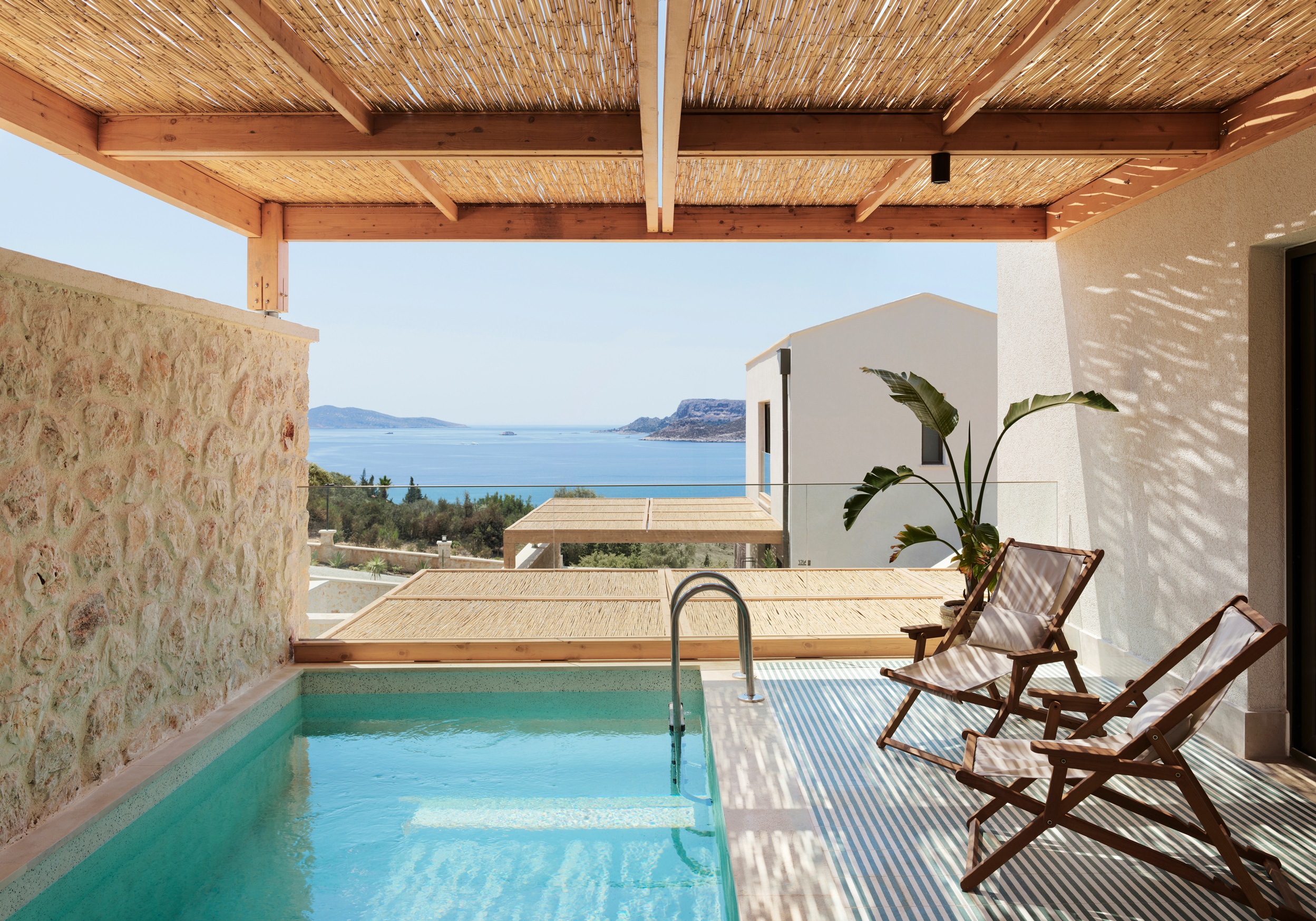Architects: Want to have your project featured? Showcase your work by uploading projects to Architizer and sign up for our inspirational newsletters.
Hotel and resort design combines luxury, comfort and cultural immersion. For this year’s Architizer A+ Awards program, the projects recognized in the Hotels and Resorts category are setting new benchmarks for excellence in the hospitality industry. These are not just buildings; they are experiences meticulously crafted to captivate and rejuvenate visitors from around the globe.
What sets these award-winning designs apart is their intrinsic connection to place. From tropical paradises to urban sites, each hotel and resort is a manifestation of its surroundings. The architects behind these projects blend local materials, diverse aesthetics and new innovations to create spaces that resonate with both the locale and the global traveler. These projects demonstrate that the best hotel and resort designs go beyond opulence and comfort. They embody a narrative of place, offering an authentic and enriching experience that leaves a lasting impression on visitors. Join us as we delve into new architecture that has rethought hospitality design this year.
Murka Hotel (Phase II)
By Thinking Design, Wenzhou, China
Popular Choice Winner, Hotels and Resorts, 12th Annual A+Awards
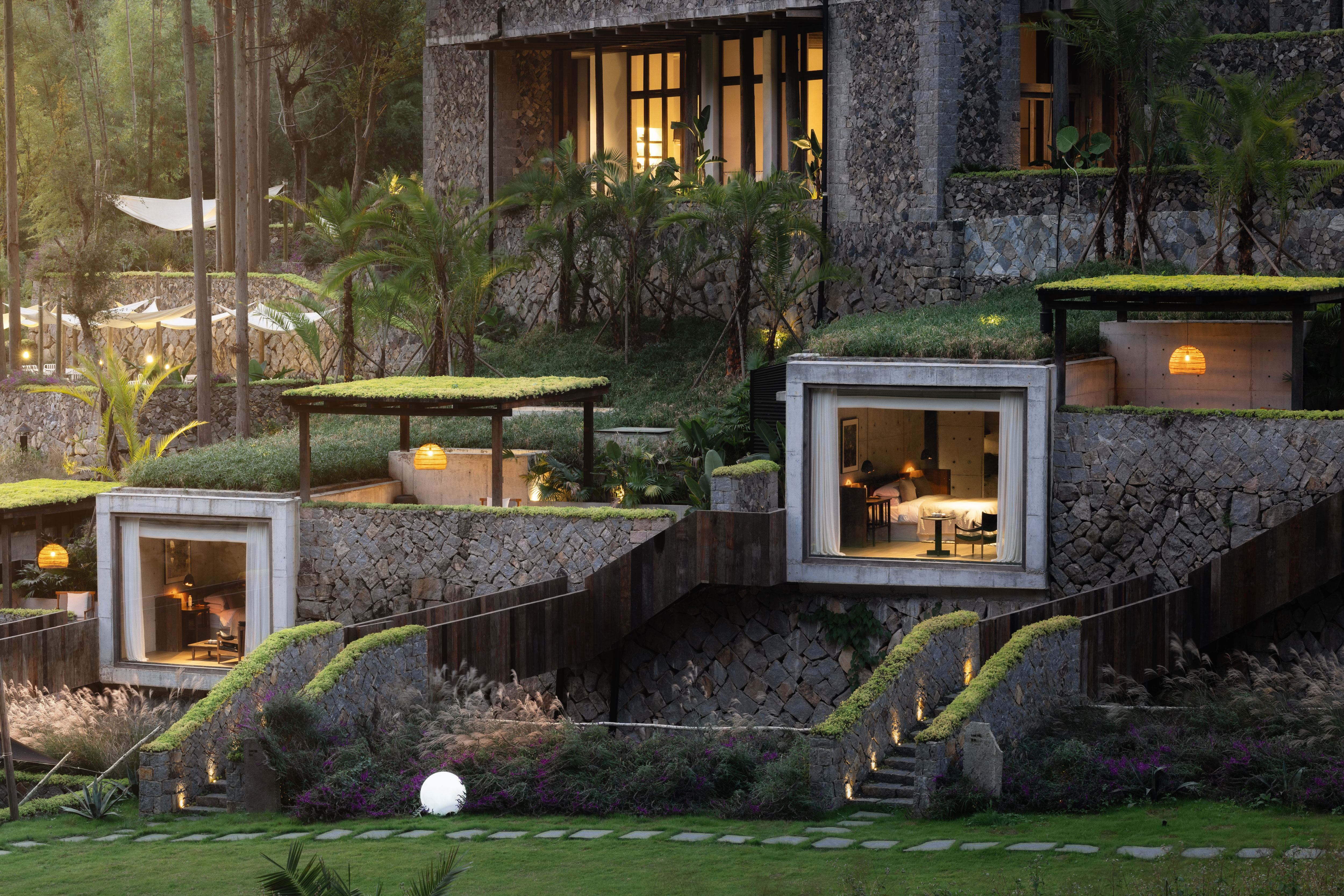
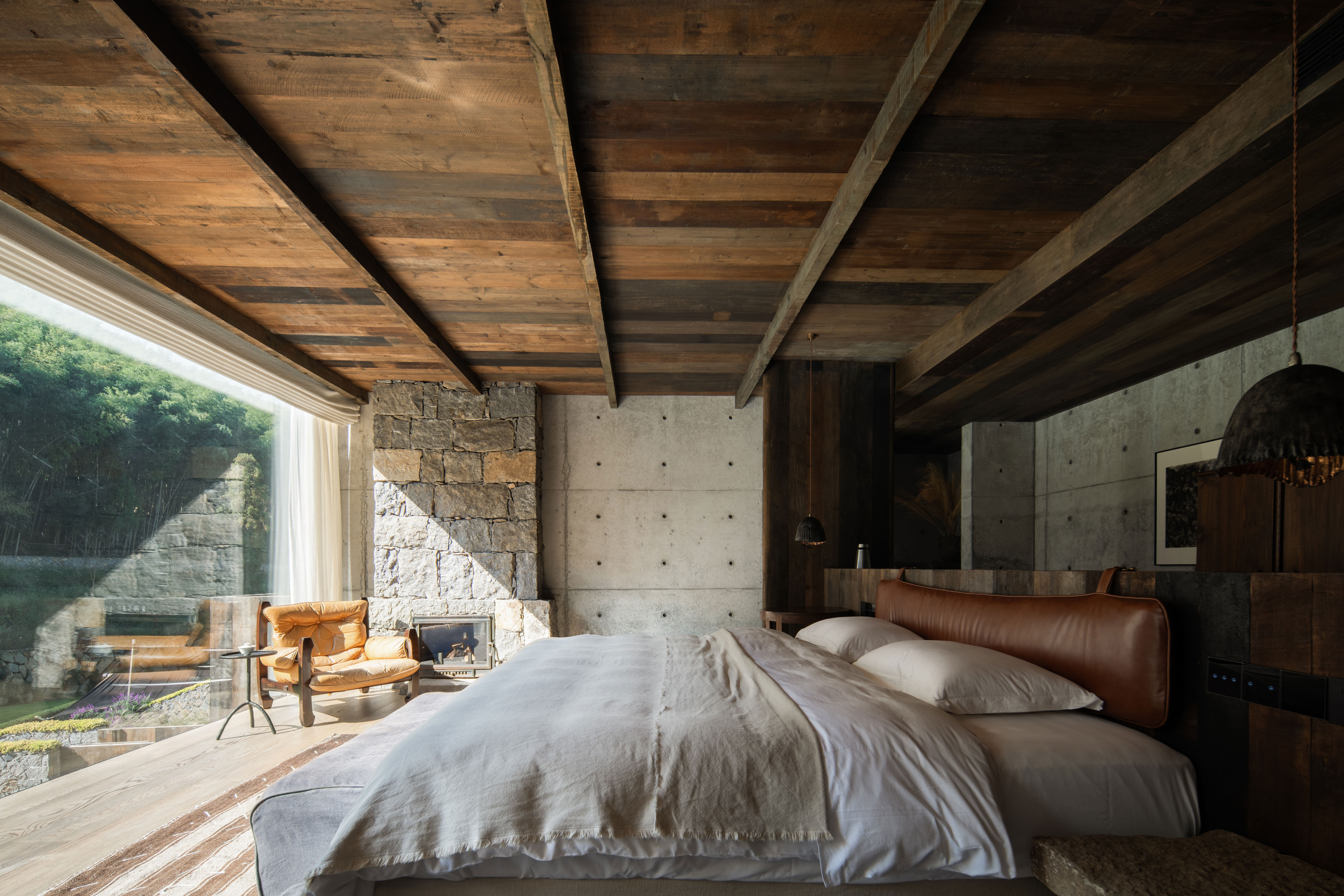 Murka Hotel is part of a rural revitalization initiative aimed at attracting urban citizens to the countryside and encouraging young locals to return and contribute to their hometown’s development. Nestled on a south-facing slope, the building complex features staggered blocks that blend seamlessly with the mountains. Using local rocks for the buildings and retaining walls creates a visually cohesive extension of the natural environment, paying homage to traditional culture and harmonizing with the village context.
Murka Hotel is part of a rural revitalization initiative aimed at attracting urban citizens to the countryside and encouraging young locals to return and contribute to their hometown’s development. Nestled on a south-facing slope, the building complex features staggered blocks that blend seamlessly with the mountains. Using local rocks for the buildings and retaining walls creates a visually cohesive extension of the natural environment, paying homage to traditional culture and harmonizing with the village context.
The design includes a restaurant with preserved trees that penetrate the roof, giving diners the sensation of being in a forest. Two buildings around large rocks house a shared restaurant and bar, using the rocks as visual focal points and structural supports. Old-timber beams and a roof adorned with wild grass add nostalgic elements. Guest rooms, built alongside a tranquil stream, feature private courtyards and overpasses for entry. Maintaining fair-faced concrete finishes and incorporating variously sized courtyards, the design floods the space with natural light, enhancing the serene atmosphere. Locally sourced rocks, reclaimed timber, and expansive French windows connect the interior to the valley landscape, offering a tranquil escape from urban life.
MAISON BRUMMELL MAJORELLE
By Studio Bergendy Cooke, Marrakesh, Morocco
Jury Winner, Hotels and Resorts, 12th Annual A+Awards

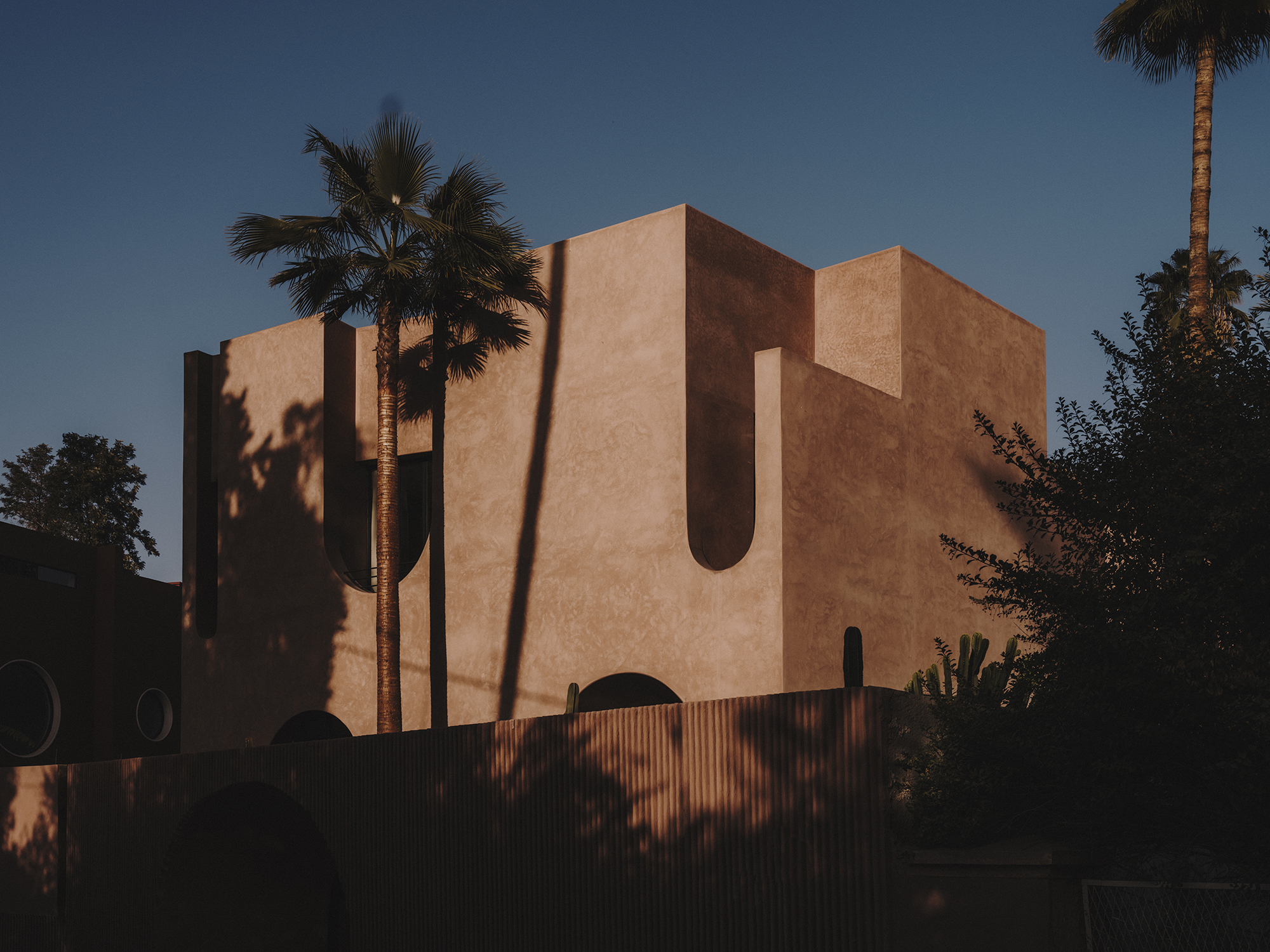 The Maison’s architecture reinterprets Arabic elements with a fresh perspective, drawing inspiration from Marrakech’s rich history without replicating it. The design’s sculptural form nods to the ancient rampart walls of the Marrakech Medina, with openings that transition into private interiors, much like a sandcastle or sculpture. Deep recesses, reminiscent of traditional Mashrabiya screens, ensure bedroom privacy and create terraces that connect to the surrounding gardens.
The Maison’s architecture reinterprets Arabic elements with a fresh perspective, drawing inspiration from Marrakech’s rich history without replicating it. The design’s sculptural form nods to the ancient rampart walls of the Marrakech Medina, with openings that transition into private interiors, much like a sandcastle or sculpture. Deep recesses, reminiscent of traditional Mashrabiya screens, ensure bedroom privacy and create terraces that connect to the surrounding gardens.
Embracing Morocco’s artisanal heritage, the design incorporates local materials and craftsmanship in innovative ways. Exterior walls of the recesses are finished in Tadlelakt, a polished plaster that contrasts with the rough Pisé exterior. Inside, terrazzo in grey and pink is used extensively, defining spaces and creating basins and baths within bedrooms. Bejmat handmade tiles adorn lower public spaces and the terrace, enhancing the seamless flow. The building, spread over three floors, features a lower level that mimics a traditional Riad’s courtyard, housing the lounge, dining area, kitchen, pool and a Hammam with a plunge pool.
Kona Village Resort
By Walker Warner, Hawaii
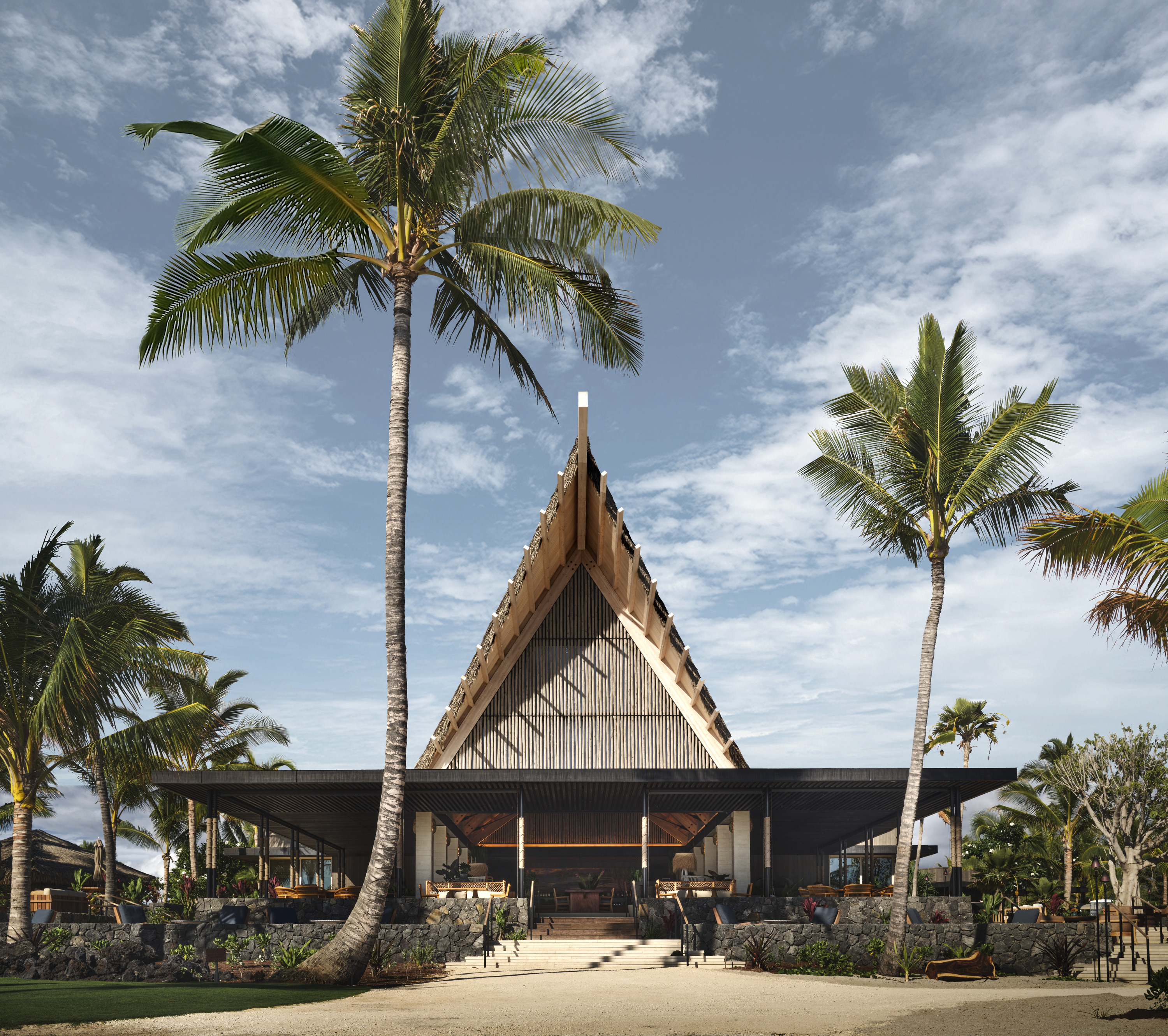
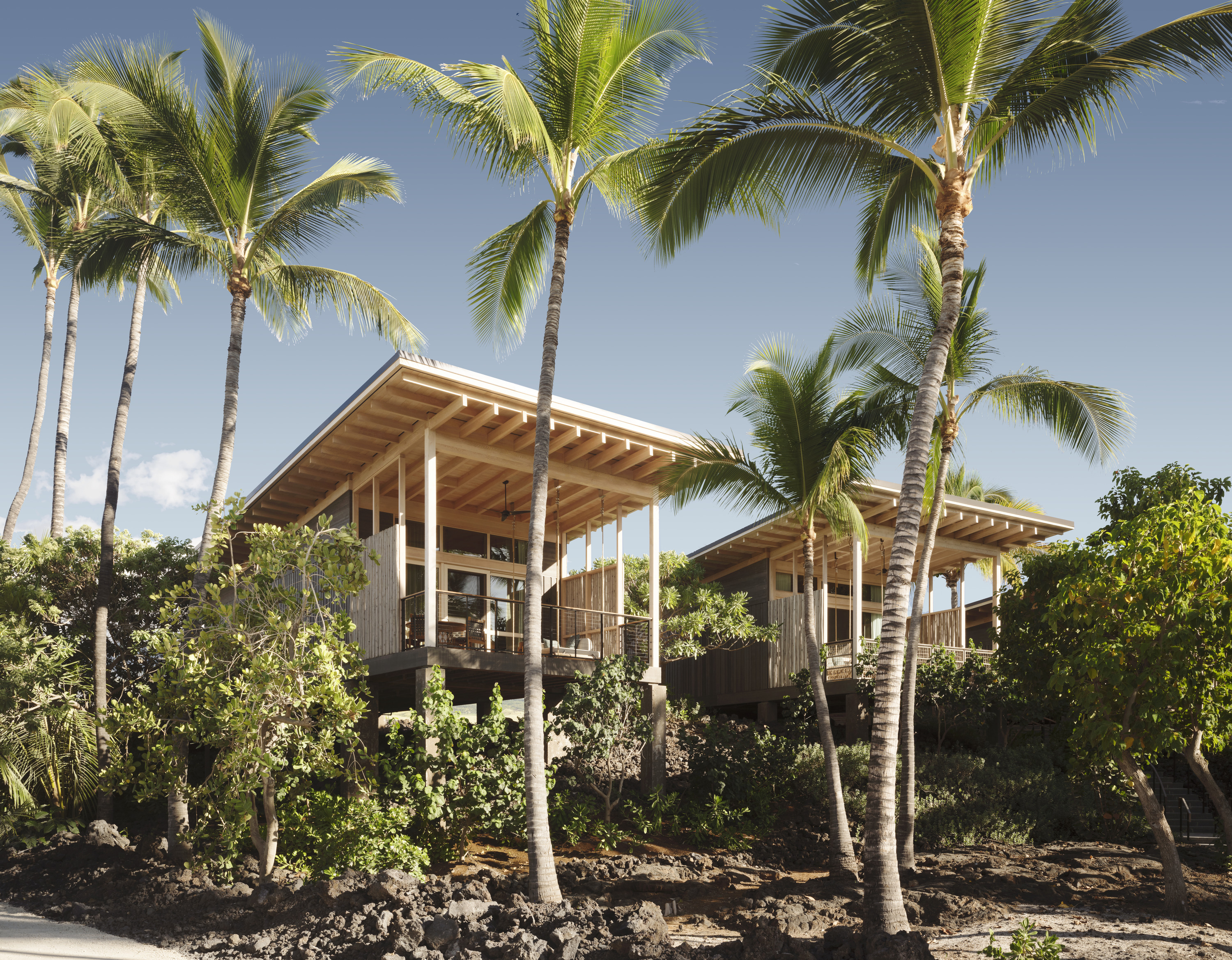 Situated on the island of Hawaii, Kona Village offers a truly unique Hawaiian experience rooted in centuries-old culture and tradition. This reimagined resort, spread over 81 acres, draws inspiration from the rich history and local sensibilities of the ancient Kaʻūpūlehu. Every aspect of the property has been designed to honor the essence of the original resort, showcasing a deep respect for the natural environment and cultural heritage.
Situated on the island of Hawaii, Kona Village offers a truly unique Hawaiian experience rooted in centuries-old culture and tradition. This reimagined resort, spread over 81 acres, draws inspiration from the rich history and local sensibilities of the ancient Kaʻūpūlehu. Every aspect of the property has been designed to honor the essence of the original resort, showcasing a deep respect for the natural environment and cultural heritage.
Under the architectural leadership of Greg Warner and Mike McCabe from Walker Warner, Kona Village now features 150 traditional guest hale, the new Asaya Spa, and five dining options, including the cherished Shipwreck and Talk Story bars from the original resort. The resort’s dedication to sustainability is evident, with several buildings achieving LEED Gold certification and the entire property powered by solar energy. Additionally, an on-site cultural center enriches visitors’ understanding of the area’s profound natural and cultural significance.
Radisson BLU Kaş
By Yeşim Kozanlı Architecture & Interior Design, Antalya, Türkiye
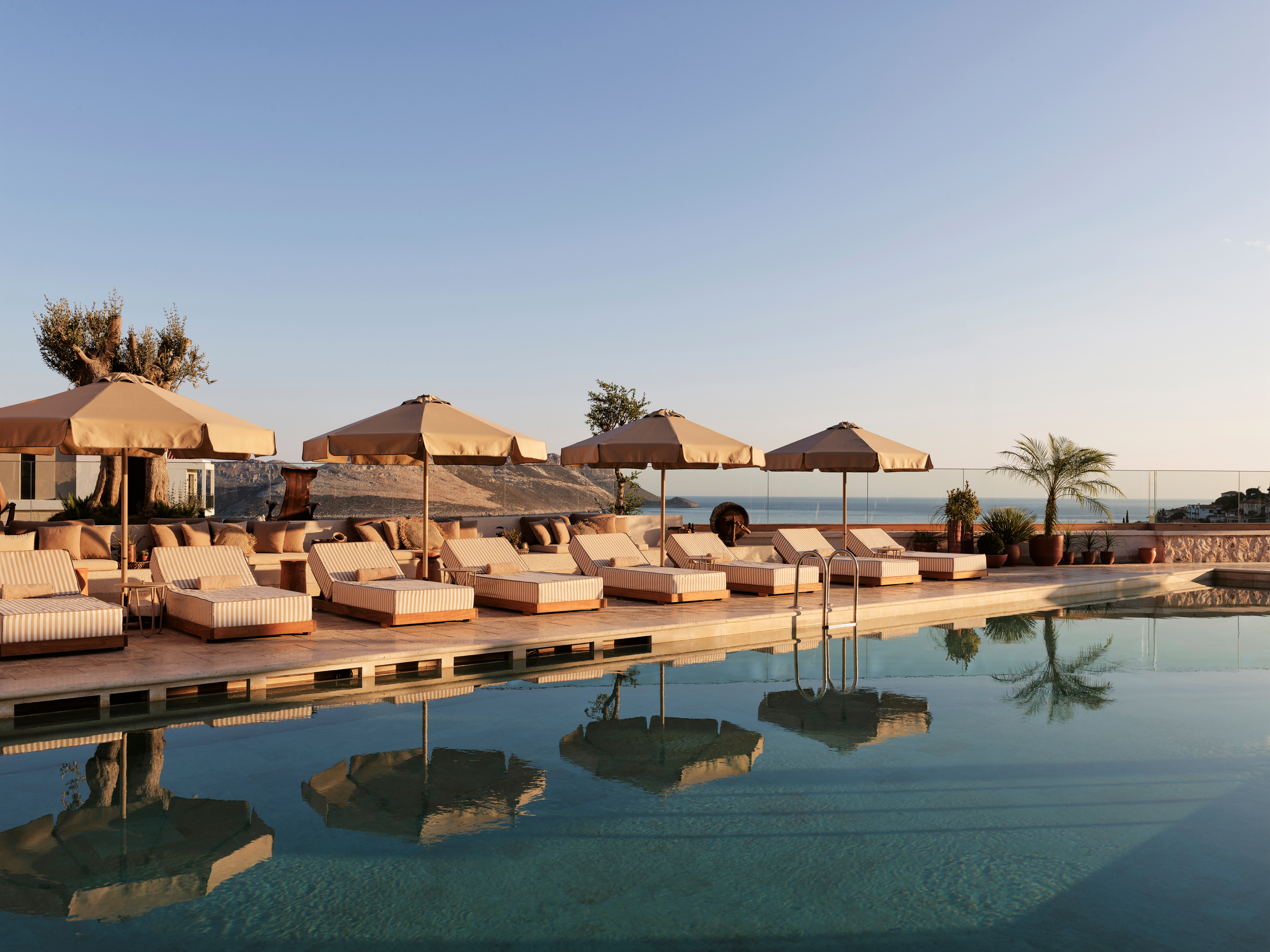
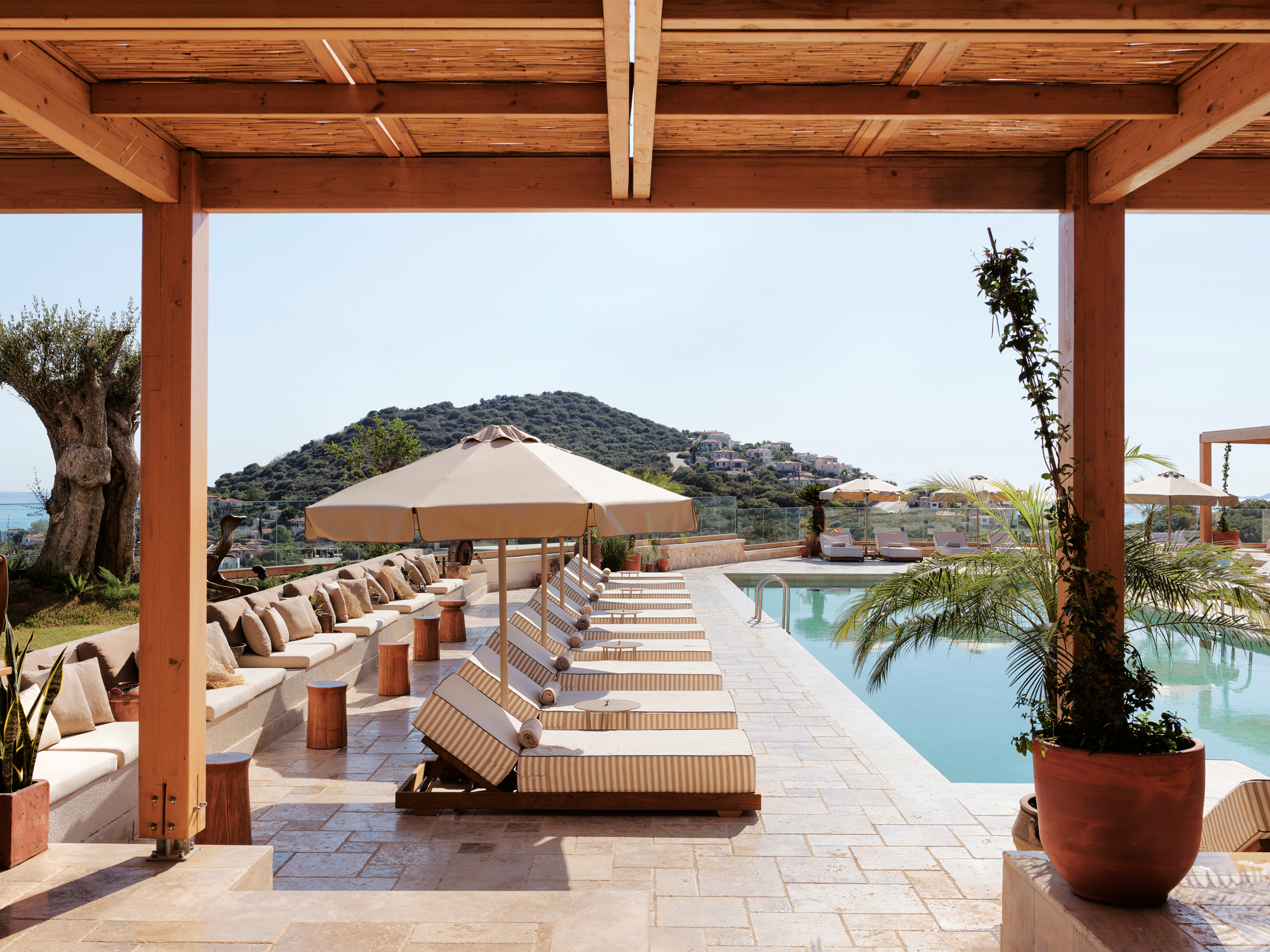 This Radisson Hotel project is tied to Kaş, a district of Antalya known for its turquoise sea, natural beauty and historical ruins. The design began with an analysis of the region’s topographic and cultural areas. Inspired by ancient Lycian granaries and the monumental architecture of Antiphellos, the design incorporates natural stone façade cladding, traditional tiles and wooden joinery. The goal was to offer a lodging experience that feels private and comfortable, akin to the comfort of one’s home, while providing beautiful social opportunities in common areas without losing touch with greenery, nature and simplicity.
This Radisson Hotel project is tied to Kaş, a district of Antalya known for its turquoise sea, natural beauty and historical ruins. The design began with an analysis of the region’s topographic and cultural areas. Inspired by ancient Lycian granaries and the monumental architecture of Antiphellos, the design incorporates natural stone façade cladding, traditional tiles and wooden joinery. The goal was to offer a lodging experience that feels private and comfortable, akin to the comfort of one’s home, while providing beautiful social opportunities in common areas without losing touch with greenery, nature and simplicity.
The project respects the region with its low-rise, spacious and human-scale designs that blend with the natural environment. Emphasis is placed on natural ventilation and air conditioning features, using earth tones to reflect the local colors and textures. Landscaping with the region’s natural vegetation in pathways and common spaces ensures a continuous connection with nature. Radisson Hotel Kaş is more than a hotel; it’s an experience where guests can immerse themselves in the spirit, history and nature of Kaş.
FORT & PORT
By Heesoo Kwak + IDMM Architects, Yeosu-si, South Korea
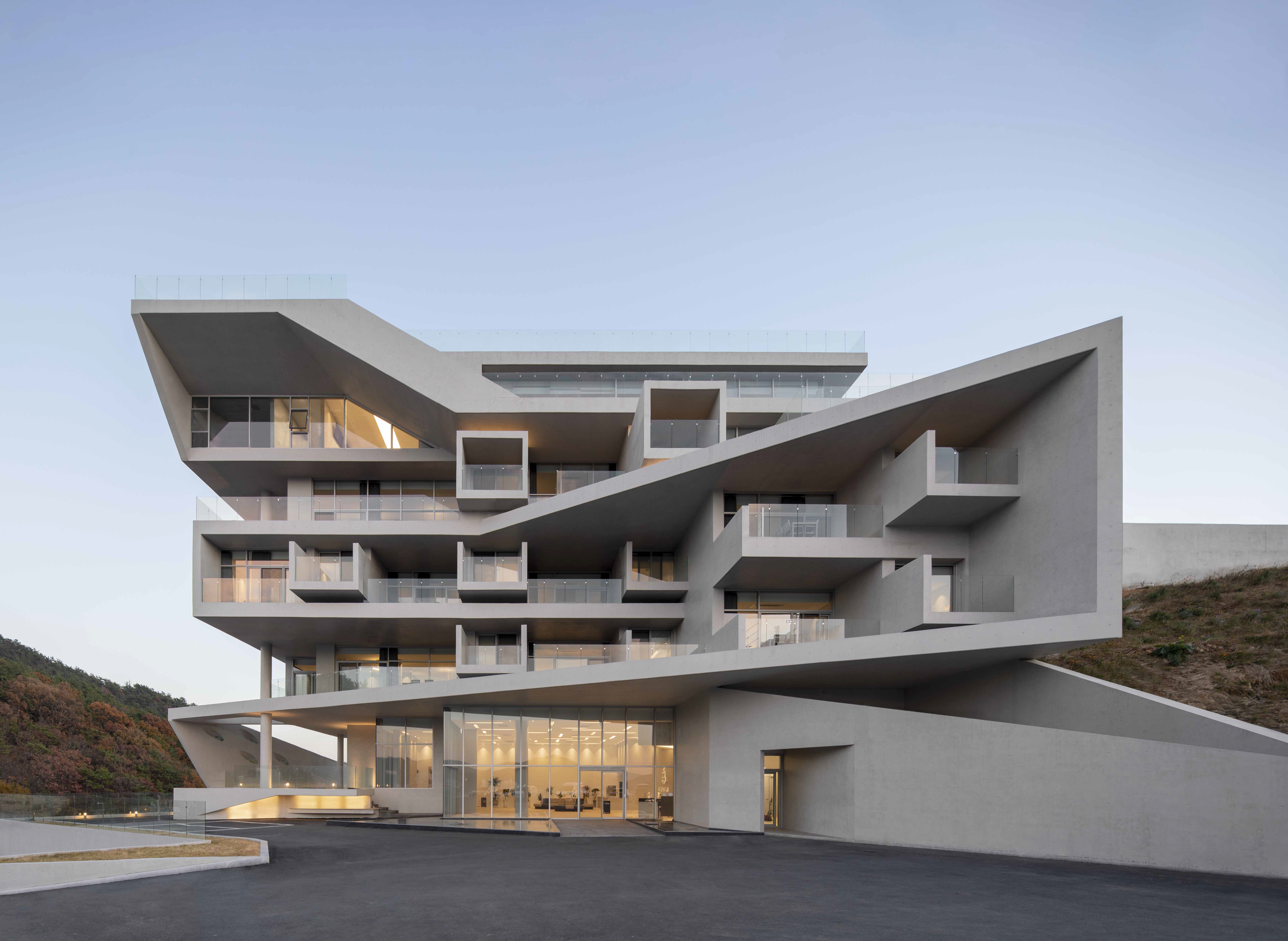
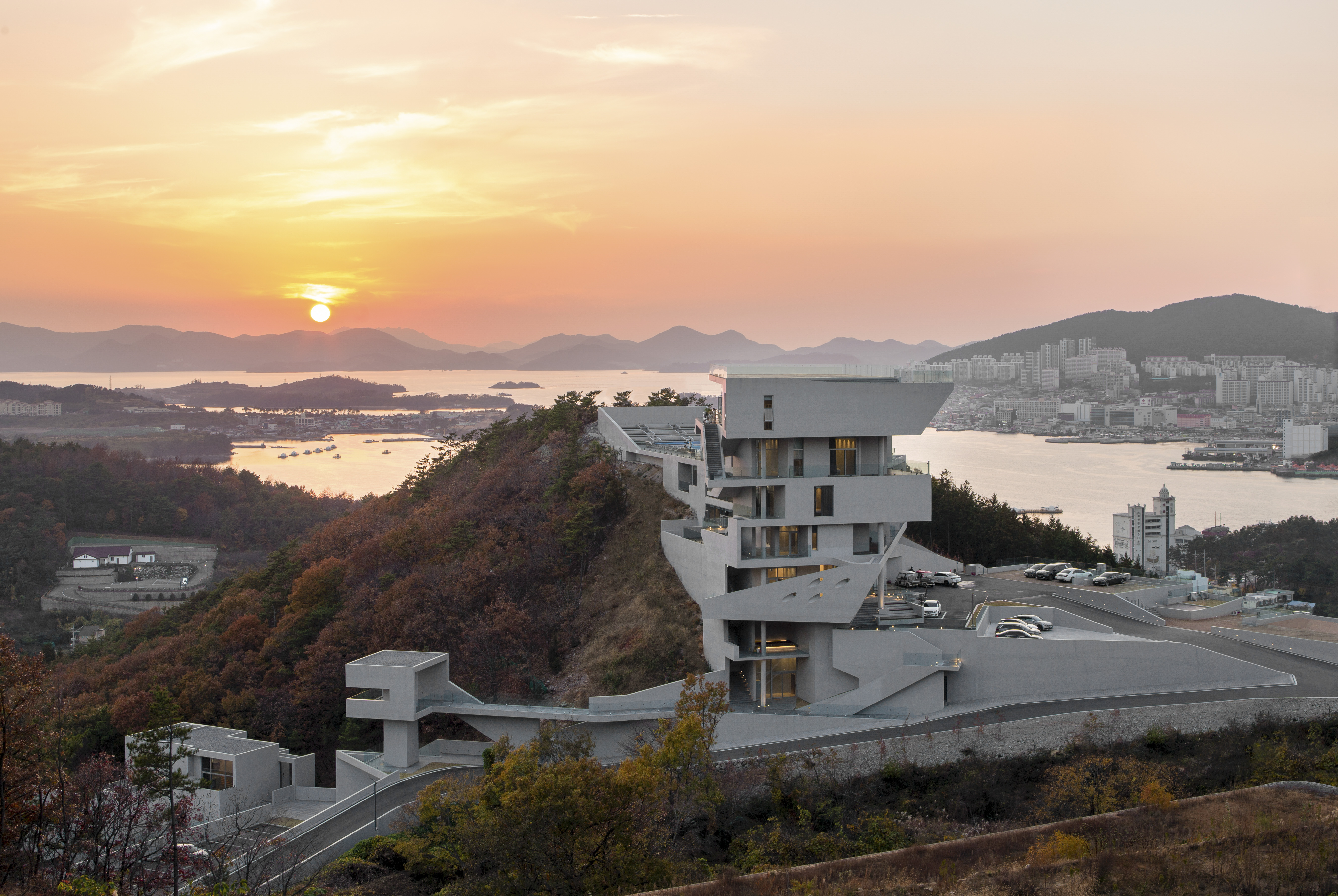 FORT & PORT offers stunning views to the northwest and southwest. The northwest view showcases Yeosu City around Jonggo-Mountain, with Marae-Mountain and Jasan Park along the coastal plain. The southwest view contrasts Seguji Village with the South Sea, creating an attractive city skyline. Known for its beautiful night sea, Yeosu became a prominent marine tourist destination in 2012, highlighted by Odongdo Island, maritime bridges and the Dolsan strait.
FORT & PORT offers stunning views to the northwest and southwest. The northwest view showcases Yeosu City around Jonggo-Mountain, with Marae-Mountain and Jasan Park along the coastal plain. The southwest view contrasts Seguji Village with the South Sea, creating an attractive city skyline. Known for its beautiful night sea, Yeosu became a prominent marine tourist destination in 2012, highlighted by Odongdo Island, maritime bridges and the Dolsan strait.
The complex layout includes a tower-type zone for enjoying city views and a single accommodation zone for recreation. The tower zone features a reception room, city-view accommodations and terraces for outdoor dining and parties. The exterior spa mass facing the terrace ensures privacy and offers a unique facade. The lounge cafe and swimming pools are accessible to both guests and cafe users, with the rooftop designed to provide panoramic views like a ship’s deck. The lower level of the cafe features an Infinity Pool with views of the city’s skyline, while the surrounding areas offer spaces for sunbathing and recreation, allowing guests to enjoy the vibrant sunset over Yeosu.
Architects: Want to have your project featured? Showcase your work by uploading projects to Architizer and sign up for our inspirational newsletters.
